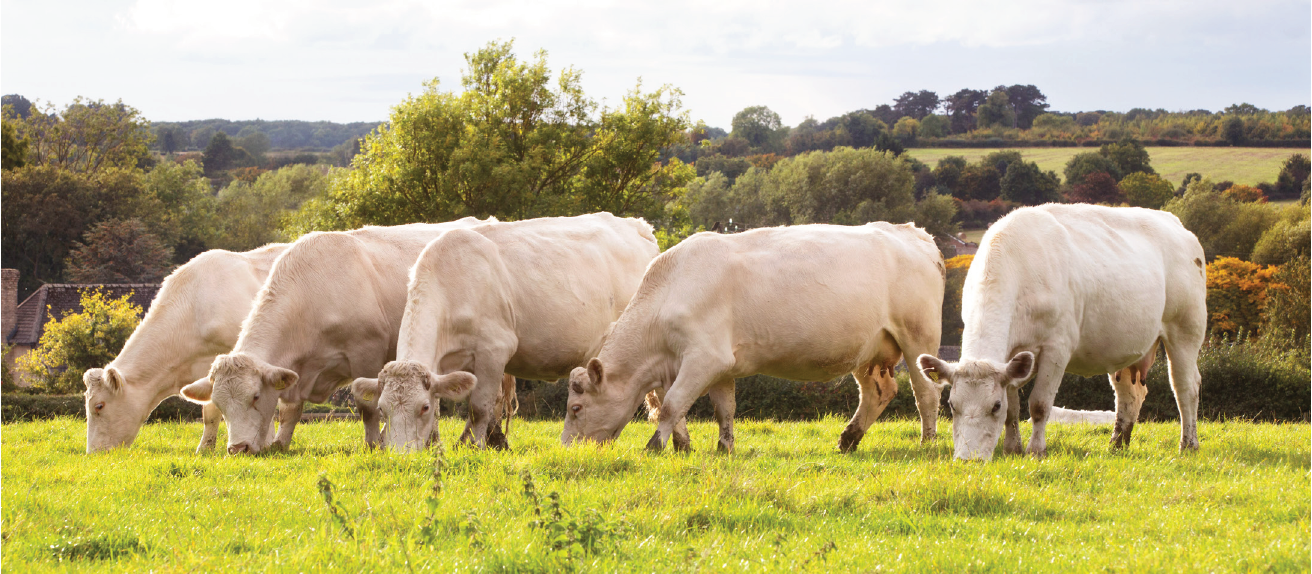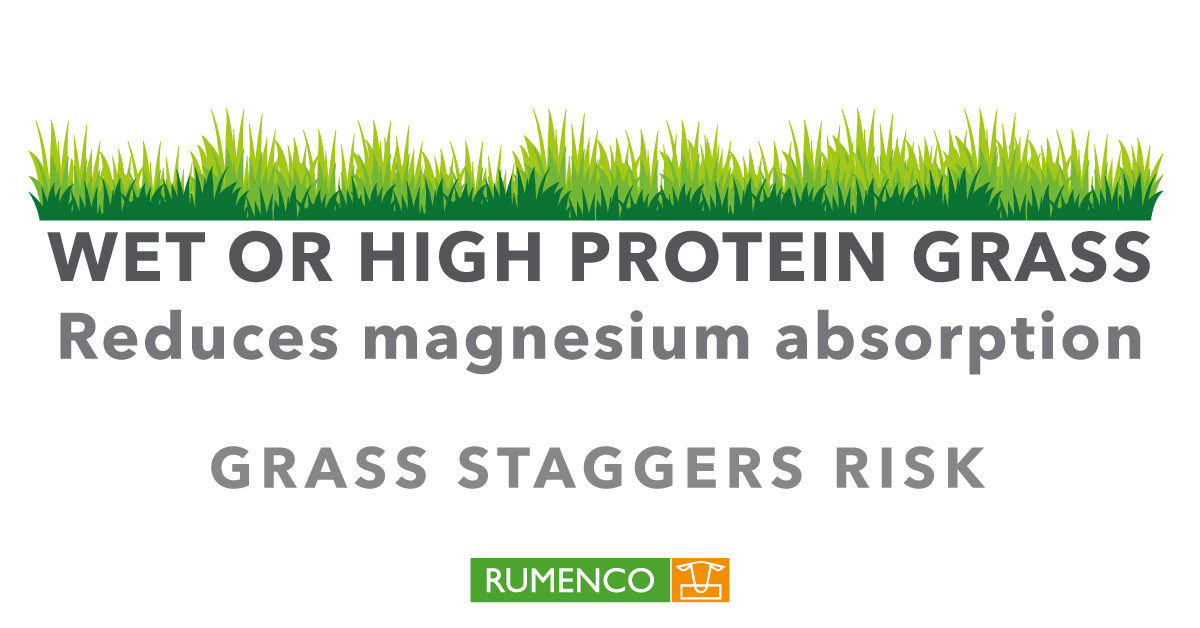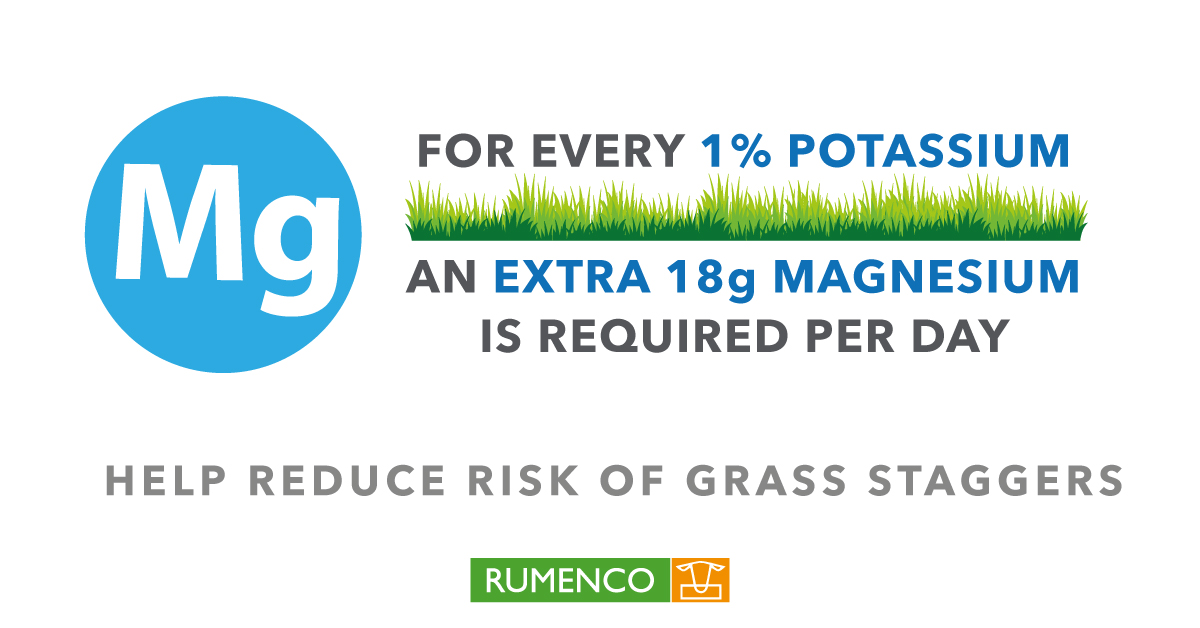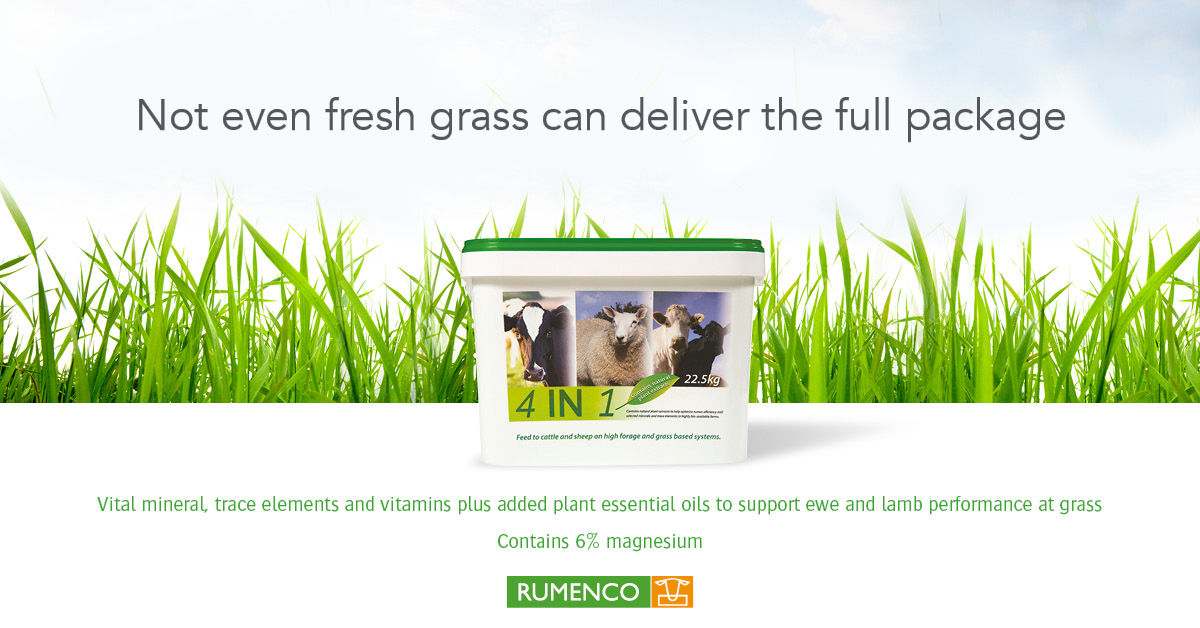SPRING GRASS FLUSH

SPRING GRASS FLUSH:PREVENTION IS BETTER THAN CURE
 Approximately 1% of cattle in the UK will experience clinical grass staggers per year. However, it is a much larger percentage of animals, including ewes, that will experience sub-clinical episodes that may affect overall animal performance.
Approximately 1% of cattle in the UK will experience clinical grass staggers per year. However, it is a much larger percentage of animals, including ewes, that will experience sub-clinical episodes that may affect overall animal performance.
Grass staggers, otherwise known as grass tetany or hypomagnesaemia, is a very real threat for suckler and dairy cows at turnout as well as ewes post-lambing. Clinical symptoms will occur rapidly and can quickly result in death which is why prevention is always better than cure. A good understanding of the on-farm risks and some simple management practices will ensure grass staggers is a thing of the past. The wet and warm winter this year means there is already plenty of grass available which may be short in magnesium and therefore farmers should consider their options early.
Grass staggers is defined as a deficiency of available dietary magnesium. Magnesium is a key macro-nutrient in the diet and is essential for bone growth and maintenance, nervous system function and also as an aid to fibre digestion in the rumen.
Rapidly growing spring grass typically has a low magnesium content (0.1 to 0.2% in dry matter) which, combined with its higher water content and rapid transit through the rumen, can result in very low levels of magnesium absorption into the animal’s bloodstream. Approximately 70% of magnesium is stored in the bones of the animal and consequently is not readily available when dietary supply is compromised. Stock therefore rely on daily magnesium supplementation to maintain adequate blood magnesium levels at times where risk is increased such as spring and autumn.
In addition to the low magnesium content of spring grass, a number of other dietary factors can compromise magnesium absorption in ruminants, further elevating the problem of grass staggers:
 • Increased potassium levels of spring grass. Potentially due to fertiliser application, high potassium can upset the sodium to potassium ratio and decrease magnesium absorption in the animal. In addition, due to its high solubility, potassium levels are often high in fast growing grass. Offering sodium (salt) alongside magnesium can help redress this ratio.
• Increased potassium levels of spring grass. Potentially due to fertiliser application, high potassium can upset the sodium to potassium ratio and decrease magnesium absorption in the animal. In addition, due to its high solubility, potassium levels are often high in fast growing grass. Offering sodium (salt) alongside magnesium can help redress this ratio.
• Dietary changes. Potential imbalances between protein and carbohydrate, like that seen in spring grass, can affect magnesium absorption.
• Metabolic stresses caused by an imbalance of minerals and trace elements can lead to a “lock up” of magnesium; again, impacting the animals’ ability to draw on the limited supply available.
• Disruptions to feed intake and therefore magnesium uptake and absorption can all increase the risk of grass staggers. Transportation, stress of calving, lambing or weaning can all have an impact on the feed intake.
• The current very wet winter we are experiencing also presents an increased risk of grass staggers due to housing changes, forage quality and availability and possible stress brought about by the flooding and very wet conditions. Minerals will have leached from grazing and it is important to ensure a balanced diet and supplementary magnesium at turnout.
There are a number of simple steps that can be taken to help alleviate the risk of grass staggers:
• Provide long fibre, in the form of hay or silage, to help slow the transition of wet spring grass through the rumen.
• Maintain dietary energy levels (notably starch and sugar) to help prevent excess rumen ammonia.• Avoid disruption to grazing.
• Minimise use of nitrogen/ potassium fertilisers.
• Offer supplementary sodium (salt) source to readdress the sodium to potassium ratio.
• Ensure daily access to a palatable magnesium supplement.
Magnesium is typically an unpalatable mineral, so by presenting it in a molassed free access lick, farmers can be assured that their stock have a reliable supplement to complement their diet.
4 in 1 is a high specification mineral vitamin and trace element lick to support optimal performance of stock at grass. Containing 6% Magnesium it is an ideal supplement for sheep throughout the spring and summer and for cattle through the summer months.
Plant essential oils have an appetite stimulating effect and 4 in 1 is fortified with protected zinc for skin and hoof health and selenised yeast to support overall health and forage utilisation.
Alternatively, SUPAlyx Mag is a highly palatable molassed mineral lick containing 15% magnesium along with a range of minerals, vitamins and trace elements, including sodium. It is suitable for feeding to breeding and lactating cows and sheep post-lambing at risk of grass staggers to help supplement grazing at this time of year.
Ideally, magnesium supplements should be offered up to two weeks pre-turnout to better prepare stock for changes. Then, by turnout, they are familiar with the supplements and are not faced with a deficit.
Grass staggers is a common, well known challenge at turnout that can be fatal, however, it’s easily avoided by understanding what the main risks are and supporting stock with suitable magnesium supplements.
